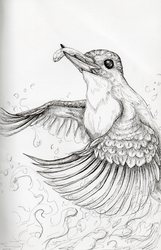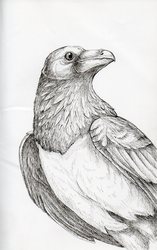Sign In
CloseTotem of the day is Red Panda! Eating more plants will be beneficial to you, possibly going on a vegetarian diet for a little while. Remember to get your rest instead of overworking yourself because it is important for you to get some play and fun in rather than worrying too much. Take time to build a safe area within your home that is comfortable and secure. Add meditation in a quiet, dark space to your routine. Starting a journal may also be beneficial in this time. There may be some interest in investigating past life relations from the Far East. The Red Panda totem is known for it's connection with success without aggression, gentleness, introspection, and spiritualism. When this totem shows up, it can mean to stop worrying and let yourself relax. Do not over stress or overwork yourself. You may have been isolating yourself too much and need to take time with friends, family, and community. In China, the Red Panda was seen as a sign of good luck and was used in many cultural ceremonies such as weddings where the groom would often wear the hide of the red panda. People who connect with Red Panda are healthier when eating small amounts throughout the day instead of larger meals. These individuals are most active after dark when they tap into their best thoughts and ideas. Red Panda souls are casual, carefree types that feel the most secure when they have a solid foundation beneath them.
Red Panda, Ailurus Fulgens, are herbivorous mammals that can live up to 8 years in the wild. These animals grow to approximately the size of an average house cat, however, their long tails add up to 18 inches to their overall length. The Red Panda does not have any close relatives, being a part of it's own unique family, Ailuridae. There are two subspecies of Red Panda: the Western Red Panda and Styan's Red Panda. However, they are distantly related to the Musteloid family including otters, skunks, weasels, badgers, and raccoons. Red Pandas live in the Eastern Himalayas throughout portions of China and Nepal. Amazingly, there have been red panda fossils found in North America dating back to 5 million years ago, however, they are only found now in small, isolated mountain regions. These bear-like mammals are covered in a rich, red, white, and black pelt and have a long, bushy, ringed tail that is perfect for helping them balance up in the branches of trees. Their preferred habitat consisted of forests where they spend most of their life up in the trees. Their red fur is actually a form of camouflage that helps them to hide against the red moss and white lichen that covers the trees of their forest homes. They often warm themselves in the sunlight at the top of trees, sleeping during the hottest part of the day before becoming more active during dawn and dusk as well as foraging at night. The diet of a Red Panda consists almost primarily of Bamboo which makes up 90% of their food sources. However, they have been seen to eat acorns, flowers, eggs, small birds, and small rodents. They have been seen to prefer eating only the most nutritious of bamboo types, nibbling at one leaf at a time with their perfectly adapted flat teeth and strong chewing muscles. Red Pandas also have a 'false thumb' which is a wrist bone that helps them to grasp bamboo shoots. They need to eat 20 to 30% of their body weight each day which can equal up to 2 to 4 lbs of bamboo shoots and leaves. Red Pandas are also known for their cleanliness, grooming themselves much like raccoons. Even dipping their paws into water to clean or drink. Sharp claws help them to climb, but also help when defending themselves. When threatened, they will stand on their hind legs and strike out with their sharp claws. If that fails, they can exude a strong scent from scent glands at the base of their tail. Red Pandas are solitary mammals that engage in a range of communication including head bobbing, staring contests, and a variety of vocalizations including squeals, snorts, exhales, high-frequency twitters, and low-frequency bleats during breeding season. When threatened, they prefer using a grumbly, ear-splitting barking sound. Breeding season occurs between January and April when they will come together in small groups. Female red pandas are only fertile for a day or two, able to delay implantation of the egg to ensure the baby is born during the summer. Only a few days before birth, the mother will build a birthing den in a rock crevice, hollow tree, or stump which is lined with soft grasses, moss, leaves, and twigs. Newborns are born grey with closed eyes and ears. They are hidden for up to 10 days, opening their eyes at 2 to 3 weeks of age. They will nurse up to 22 weeks old when their grey hair begins to change to red. They will ask for attention with loud, high-pitched whistles and are carried around in their mother's mouth. They begin to eat solid food at 3 months old and fully mature around 20 months when they are driven away from the mother so she can attend to raising her next litter.
Submission Information
- Views:
- 306
- Comments:
- 0
- Favorites:
- 1
- Rating:
- General
- Category:
- Visual / Traditional




